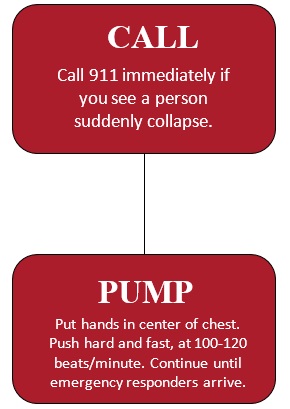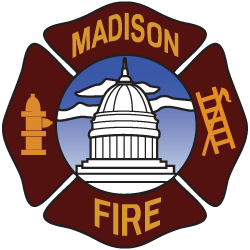Hands-Only CPR
According to the American Heart Association, about 90% of people who experience out-of-hospital cardiac arrest die. Cardiac arrest survival depends heavily on whether the victim receives hands-only CPR. This method is an easy and effective way for a bystander to double or triple a victim’s chance of survival!
Learn Hands-Only CPR for Free!
We at the City of Madison Fire Department want everybody to know how to perform hands-only CPR and how to use an AED. We offer free classes each month. Upcoming class offerings:
- Wednesday, July 19 at 8:30 a.m. - Fire Station 1 (316 W. Dayton Street)
- Wednesday, July 19 at 10:15 a.m. - Fire Station 1 (316 W. Dayton Street)
- Wednesday, August 30 at 8:30 a.m. - Fire Station 12 (400 South Point Road)
- Wednesday, August 30 at 10:15 a.m. - Fire Station 12 (400 South Point Road)
This is a non-certification course. Find a certified CPR course near you .
What is Hands-Only CPR?
Hands-Only CPR involves performing chest compressions on a person experiencing cardiac arrest. It acts as a temporary heartbeat for the victim and pumps remaining oxygen to the rest of the body, especially the brain. It buys time for the victim until emergency responders arrive, making it a crucial link in the chain of survival.
It is easy to tell yourself that you do not need to learn Hands-Only CPR because someone else will know how to. In a public area, there has to be someone else who can help, right?
In reality, most cardiac arrests happen in private spaces, with over 70% of cardiac arrests that happen outside of hospitals occurring in the home. That means the duty often lies on family and loved ones, and that could be you!
Hands-Only CPR can be done in two simple steps:

So you got the steps down, now what? Download the PulsePoint app to be alerted when someone nears you need help! What's more, the app will help you keep the beat to a 100-120 beats/minute rhythm. Once the app is opened, tap on “CPR How-to”. At the bottom of the page, tap “Hear Compression Rate.”
When someone is suffering from cardiac arrest, every second counts. Someone’s life is in your hands. Will you save a life?

